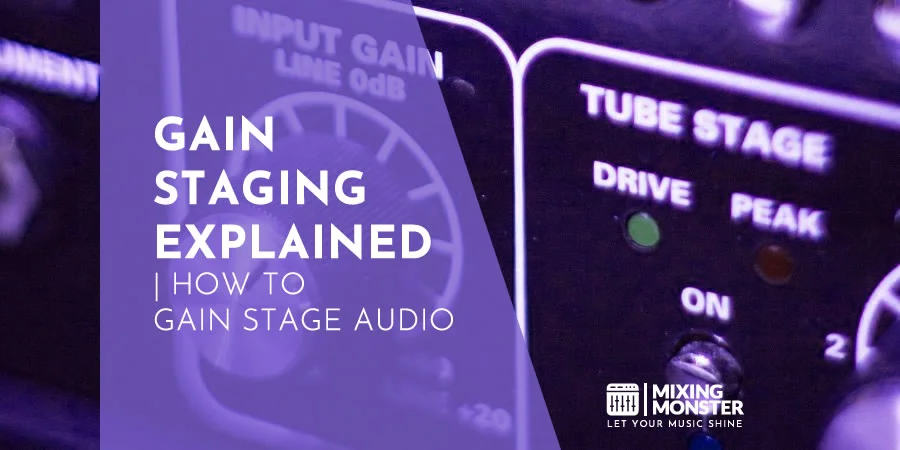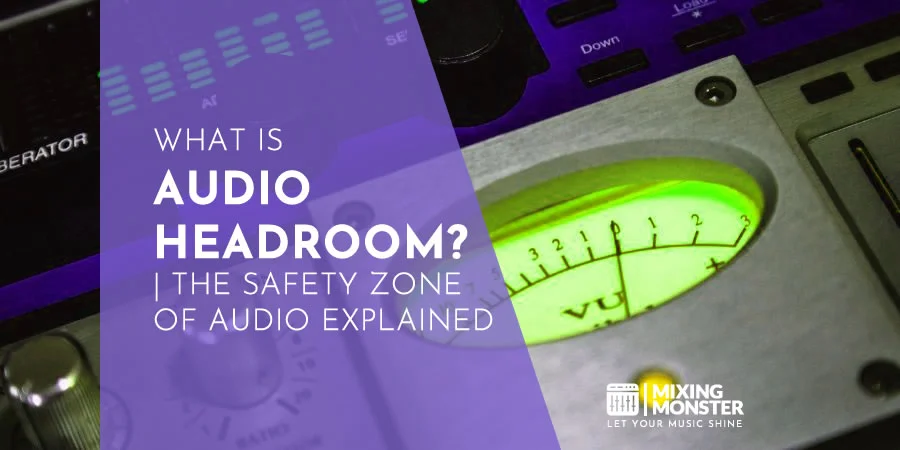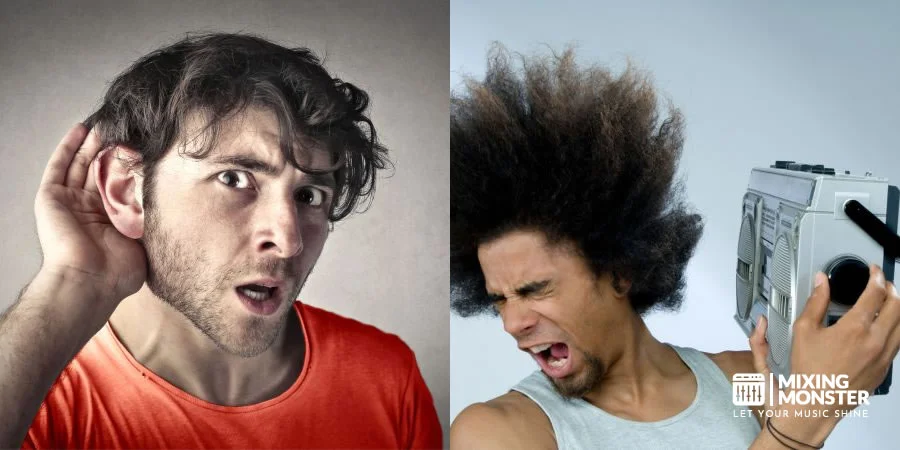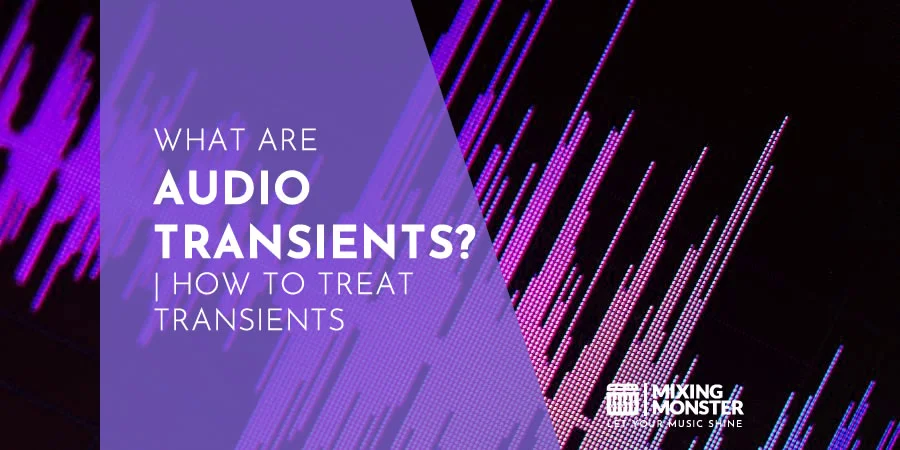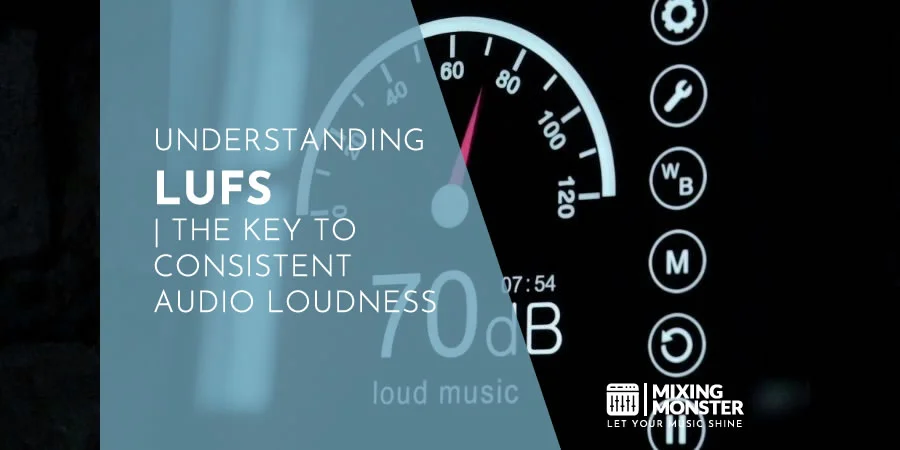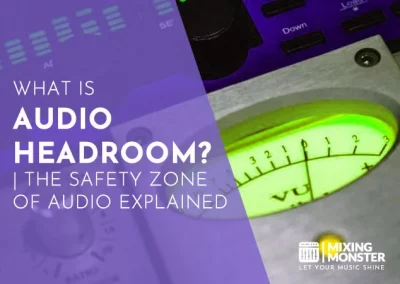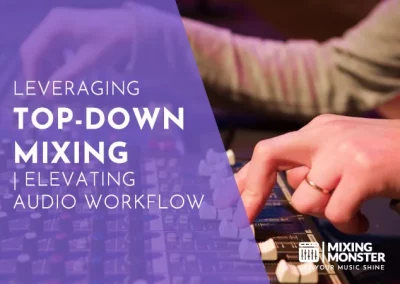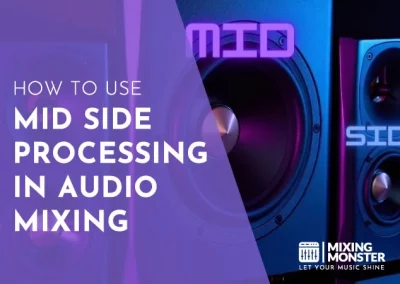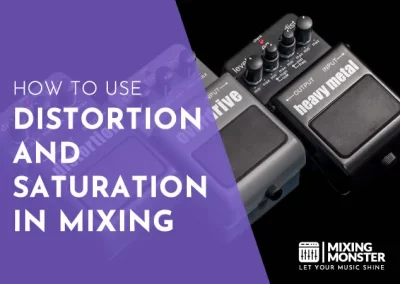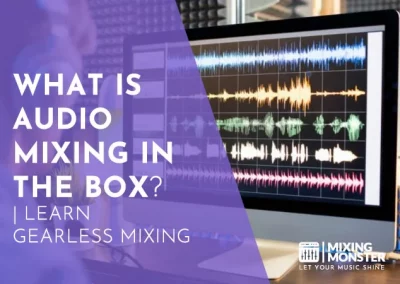Home > Blog > Mixing > Mixing Techniques
In music production, gain staging is a critical element that can make or break the quality of your audio output. This is your definitive guide to mastering this crucial art, providing you with the knowledge and tools to produce crystal clear, distortion-free sound. Buckle up as we journey through gain staging, unraveling its intricacies and revealing its transformative impact on your audio projects.
Gain staging is a fundamental process in audio production aimed at managing signal levels to achieve clear, distortion-free sound. It involves adjusting gain at each point in the signal path, from source to output. Proper gain staging can vastly improve quality in audio productions.
Did you know that proper gain staging is inevitable in audio production, creating a clean, dynamic sound? Uncover the secret sauce of top-notch sound professionals and unlock the potential of your audio projects with correct gain staging.
Table Of Contents
1. Understanding Gain Staging: A Comprehensive Introduction
2. Fundamentals Of Gain Staging
3. Consequences Of Failed Gain Staging
4. How To Implement Gain Staging
5. Benefits Of Proper Gain Staging
6. Best Practices For Gain Staging
7. Examples Of Gain Staging
8. Wrapping Up: Achieving Audio Excellence With Gain Staging
9. FAQ

1. Understanding Gain Staging: A Comprehensive Introduction
Understanding the fundamental concept of gain staging is a must in audio production. Let’s embark on an intriguing journey to demystify this critical element and enhance your audio expertise.
What Is Gain?
The term ‘gain’ often gets tossed around in audio discussions, but what does it mean? In the simplest terms, gain refers to the amplification level of an audio signal. It’s about making a sound louder or quieter before it hits any other part of your signal chain.
But it’s crucial to note that gain isn’t just about volume. It’s about the ‘health’ of your signal—too much gain can lead to distortion, while too little can bury your sound in background noise.
What Is Gain Staging?
Now that we understand gain let’s delve into gain staging. Gain staging is managing and setting appropriate gain levels at each point in the signal path—from the input source to the output device—to prevent distortion and noise.
Doing so can ensure the highest audio quality, maximizing your signal strength while minimizing unwanted noise.
The Importance Of Gain Staging In Audio Production
So, why should you care about gain staging? Imagine painting a masterpiece on a bumpy, dirty canvas—it wouldn’t quite work, right? Similarly, your audio masterpiece might become a sonic mess without proper gain staging.
Accurate gain staging allows for a clean, distortion-free sound, making it a crucial aspect of producing high-quality audio.
Evolution Of Gain Staging: From Analog To Digital
The concept of gain staging isn’t new—it’s been around since the analog era. However, the transition to digital has changed how we approach gain staging. Pushing gain levels was often desirable in the analog world, as it introduced a pleasing saturation effect.
But in the digital realm, pushing levels too hard can result in harsh digital distortion. Thus, the principles of gain staging have had to adapt to this new environment.
There you have it, a brief introduction to gain staging. As we dive deeper, you’ll gain a practical understanding of how to stage gain for your audio projects effectively, the pitfalls to avoid, and the benefits of getting it right.
So, are you ready to elevate your audio game? Stick around because we’re just getting started!
2. Fundamentals Of Gain Staging
As we venture further into gain staging, it’s essential to grasp its fundamentals. This process, which may seem daunting initially, becomes manageable once you understand its basic concepts, working mechanism, and the principle of gain levels and headroom.
Basic Concepts Of Gain Staging
In essence, gain staging involves regulating the levels of audio signals at each stage of the audio signal chain. From the input device, through all processing stages, to the final mix-down and mastering, every stage affects the quality of the audio output.
Balancing the signal level at each step is crucial, ensuring no single point introduces noise or distortion.
How Gain Staging Works: A Technical Overview
Imagine gain staging as a relay race, where the audio signal is the baton. Each runner (a stage in the audio chain) must pass the baton cleanly to the next to ensure the best team (audio) performance.
In technical terms, each stage amplifies the signal when an audio signal travels from one stage to another—from a preamplifier to an equalizer.
The gain at each stage must be strong enough to be above the noise floor (the signal level below which any sound gets lost in background noise) but below the point of clipping (where the signal level is so high that it causes distortion).
Understanding Gain Levels and Headroom
‘Gain levels’ and ‘headroom’ are two terms you’ll frequently encounter in gain staging conversations. Gain levels refer to the amplification or attenuation a signal receives at a stage. Proper gain staging ensures that the gain levels are appropriate at each stage.
On the other hand, ‘headroom’ refers to the difference between the average operating level of the signal and the maximum level before clipping occurs. More headroom allows you to manipulate your audio during mixing and mastering without introducing distortion.
Want to learn more about headroom? Check this out:
In the table below, we break down these critical terms for easy reference:
| Term | Definition |
| Gain | The amplification level of an audio signal |
| Gain Staging | The process of managing gain levels at each point in the audio signal path |
| Gain Level | The amount of amplification or attenuation a signal receives at a stage |
| Headroom | The difference between the normal operating level and the maximum level before clipping occurs |
Understanding these fundamentals will equip you with the knowledge to control the gain effectively and prevent common issues like noise and clipping.
But what happens when gain staging goes wrong? Let’s explore that next!
3. Consequences Of Failed Gain Staging
Just like a poorly balanced diet can lead to health problems, poor gain staging can harm your audio’s health. It’s crucial to comprehend these consequences, as it can aid you in avoiding common pitfalls and ensuring your audio signals remain clean and robust.
What Happens If The Gain Is Too Low?
If your gain is too low, your audio signal may fall close to or below the noise floor. This situation is like trying to converse in a noisy crowd – your audio will struggle to rise above the ambient noise, and your desired sounds may get lost.
Additionally, when you try to amplify this weak signal during mixing or mastering, you’re boosting the desired audio and the underlying noise, leading to poor-quality output.
What Happens If The Gain Is Too High?
Setting the gain too high on the other end of the spectrum can be equally problematic. When your gain is excessive, your audio signal may surpass the maximum headroom, causing clipping.
Clipping results in distortion, as the tops of your audio waveforms get ‘clipped’ off, altering the original sound. This scenario can be compared to a container overflowing with water when filled beyond its capacity.
To illustrate, here’s a comparison of scenarios with low and high gain:
- Low Gain:
The signal is weak and struggles to rise above the noise. Amplifying it also amplifies the noise. - High Gain:
The signal exceeds the headroom, causing clipping and distortion.
As you can see, both situations can lead to subpar audio quality. Therefore, gaining a practical understanding of how to implement gain staging correctly is crucial. Let’s dive into that next!
4. How To Implement Gain Staging
With the knowledge of the fundamentals and the potential pitfalls, you are now ready to implement gain staging in your audio projects. Whether you’re working with mixers, preamps, or Digital Audio Workstations (DAWs), this guide will serve as your roadmap.
Steps To Effective Gain Staging
Here’s a step-by-step process to get you started with gain staging:
- Begin At The Source:
Set the gain at your audio source, ensuring a robust and clean signal. This setting should be above the noise floor but below the point of distortion. - Check Each Stage:
As your signal moves through the chain (equalizers, effects processors, etc.), maintain appropriate gain levels at each stage. This balancing act prevents any single stage from introducing noise or distortion. - Final Adjustments:
At the final stage—usually your mixing console or DAW—adjust the gain as necessary for the overall mix, keeping the headroom for future adjustments in mind.
Remember, the aim is to preserve the integrity of your audio signal from the source to the output, ensuring a clean, clear, and dynamic sound.
Gain Staging In Various Audio Devices: Mixers, Preamps, And DAWs
Gain staging principles apply irrespective of your devices, although the implementation may differ slightly. For instance, when using a mixer or preamp, the gain knob adjusts the amplification of the input signal.
With DAWs, you often have multiple points to control the gain, including the track fader, plugins, and the master fader.
Interested in finding the best digital audio workstation for your needs? Here’s a comparison of the best DAWs currently available:
Advanced Gain Staging Techniques
As you gain proficiency, you can experiment with more advanced techniques. For example, when working in a DAW, you can employ ‘trim’ plugins to precisely control the gain entering each effect plugin in your chain.
These techniques can give you greater control over your gain staging, leading to professional-quality audio output. Always keep the concept of dynamic range in mind:
Remember, gaining proficiency in gain staging is a journey, not a destination. The more you practice and experiment, the more intuitive it will become.
Next, look at the benefits you can reap from proper gain staging.

5. Benefits Of Proper Gain Staging
Understanding the mechanics of gain staging is one thing, but appreciating its benefits brings its value into perspective. Proper gain staging is a secret ingredient, adding a professional touch to your music production. Let’s dive into the specific benefits it offers.
Improved Sound Quality
The foremost benefit of effective gain staging is the noticeable improvement in sound quality. It eliminates unwanted noise and distortion, providing clean and clear audio. It’s like cleaning a foggy window; suddenly, everything becomes crisp and clear.
Proper gain staging preserves tasteful transients in your recordings, which lead to a dynamic, punchy, and engaging sound. Always be aware of the fact that incorrect gain staging can destroy valuable transient material.
Want to learn more about audio transients? This article might help:
Consistent Levels Across Devices
With proper gain staging, you ensure consistency across all devices in your signal chain. Whether you’re playing audio through a home theater system or earbuds, your listeners will experience the sound you intended without any unpleasant surprises.
Lower Risk Of Distortion And Noise
You drastically reduce the risk of noise and distortion by keeping your signal levels within the sweet spot—above the noise floor and below the clipping level. This benefit is akin to driving at a safe speed: you avoid the risks associated with both crawling and speeding.
Greater Control Over The Final Mix
Proper gain staging gives you more flexibility and control in the final mixing and mastering stages. With ample headroom and clean signals, you can shape the sound to your artistic vision without worrying about noise or clipping.
In conclusion, proper gain staging sets the stage for excellent audio production, ensuring listeners enjoy the best sound. Now that we know its benefits let’s learn some best practices to master gain staging.
6. Best Practices For Gain Staging
In audio production, there’s an art to gain staging, and like all arts, it’s guided by best practices. Here, we’ll explore some proven tips and tricks to help you avoid common mistakes and maximize your gain staging endeavors.
Tips And Tricks For Optimal Gain Staging
- Check Your Levels Regularly:
As with vital signs in medicine, regular check-ups are essential. Continuously monitor your levels throughout the signal chain to ensure they remain within the optimal range. - Start From The Source:
Begin with the highest quality source material possible. Remember, garbage in, garbage out! A strong, clean input signal sets the stage for successful gain staging. - Use Your Ears:
Trust your ears. While visual meters are helpful, they can’t replace your subjective perception of sound. If it sounds right, it probably is right. - Leave Room For Mastering:
Remember to leave enough headroom for mastering. A good rule of thumb is to aim for your mixes to peak at around -6dB to leave ample room for final adjustments. - Avoid ‘Gain Hopping’:
Increasing the gain at one stage only to decrease it at the next (and vice versa) can introduce noise and distortion. Aim for consistency throughout your signal chain.
Understanding, monitoring, and controlling loudness in any music production is very beneficial and crucial. Feel free to learn about loudness here:
Common Mistakes And How To Avoid Them
Even seasoned audio engineers can fall prey to common gain staging mistakes. Here are a few to watch out for:
- Overloading The Input Stage:
This is often due to not correctly setting the input gain, which can lead to clipping and distortion. Always ensure your input gain is set correctly. - Not Leaving Enough Headroom:
As mentioned earlier, leaving enough headroom for mastering is crucial. Avoid pushing your levels too high during the mixing stage. - Not Checking Levels Regularly:
Continuous monitoring is critical. Ignoring your levels could lead to unexpected clipping or noise, ruining an otherwise great mix.
Remember, mastering the art of gain staging takes practice and patience, but the payoff is well worth it. Now, let’s delve into some real-life examples of gain staging.
7. Examples Of Gain Staging
Now that we’ve covered the theory and best practices of gain staging let’s consider some real-world examples. Whether in a live sound environment, a studio recording session, or during post-production, gain staging plays a pivotal role.
Gain Staging In Live Sound Production
In a live sound setting, like a concert or event, gain staging starts at the sound source (the artist’s voice or instrument). The sound engineer sets the gain on the microphone preamp to optimize the signal-to-noise ratio, ensuring a clear and robust signal without distortion.
This signal then moves through the mixing console and out to the speakers, with the sound engineer carefully managing the gain at each stage to maintain optimal sound quality.
Gain Staging In Studio Recording
In a studio recording environment, gain staging begins at the microphone and continues through the audio interface into the DAW. Here, the audio engineer sets the gain for the microphone to capture the best possible signal from the performer.
The signal is then fine-tuned at the audio interface to match the input requirements of the DAW. Inside the DAW, the engineer carefully manages the gain across various tracks and effects, always mindful of the overall mix and the headroom needed for mastering.
Gain Staging In Post-production and Mastering
In the post-production and mastering stages, gain staging is crucial to ensuring the final product sounds as good as possible. This process involves balancing the levels of different tracks and elements in a mix, applying EQ and effects, and finally setting the overall level of the finished track.
Proper gain staging throughout this process can prevent unwanted noise or distortion and ensure a clear, balanced, and dynamic final product.
These examples illustrate how gain staging is a constant companion throughout the audio production process. As we wrap up, let’s summarize the essence of gain staging and its crucial role in achieving audio excellence.
8. Wrapping Up: Achieving Audio Excellence With Gain Staging
While seemingly a technical and dry aspect of audio production, Gain staging is indeed the invisible backbone that upholds sound quality. It’s the finely tuned balancing act that, when executed correctly, leads to pristine audio output.
Whether in a bustling live sound environment or the tranquility of a mastering studio, gain staging is your constant companion.
Achieving audio excellence is no small feat—it requires a keen ear, technical prowess, and a deep understanding of sound dynamics. However, by implementing proper gain staging practices, you’ve already set the stage (no pun intended) for success.
The clear, balanced, and distortion-free sound you yield will testify to your efforts.
Gain staging is more than a process or technique; it’s an integral part of your journey as an audio professional or enthusiast. As you experiment with different equipment, navigate various sound environments, and hone your skills, you’ll find that the principles of gain staging remain a steady guide.
In the end, remember that while the technology and tools at your disposal are powerful, nothing replaces your ears and judgment. As you blend technical precision with creative instinct, you’ll achieve audio excellence and find joy in the process.
Happy gain staging!
9. FAQ
- What Is The Difference Between Volume And Gain In Gain Staging?
Volume and gain, while interrelated, serve different purposes. Gain controls the input level and is about optimizing the signal-to-noise ratio. Volume, on the other hand, controls the output level and is more about the listening experience. - How Can I Improve My Gain Staging Skills?
Practice and patience are essential. Start by understanding the basic principles, then apply them in different scenarios, like live sound, studio recording, or post-production. Experiment with different equipment and settings, and always trust your ears! - What Are The Most Common Gain Staging Mistakes?
Overloading the input stage, not leaving enough headroom for mastering, and not checking levels regularly are common mistakes. Awareness and careful monitoring can help avoid these pitfalls. - How Does Gain Staging Affect The Final Mix?
Proper gain staging ensures the final mix has a clean, clear, and balanced sound. It reduces the risk of distortion or noise, allows for better control during mixing and mastering, and ensures consistent levels across all devices. - Can I Apply Gain Staging Techniques To Any Audio Device?
Regardless of the specific hardware or software, the principles of gain staging apply. Remember, it’s all about managing the levels throughout the signal chain to ensure the best possible sound quality.

